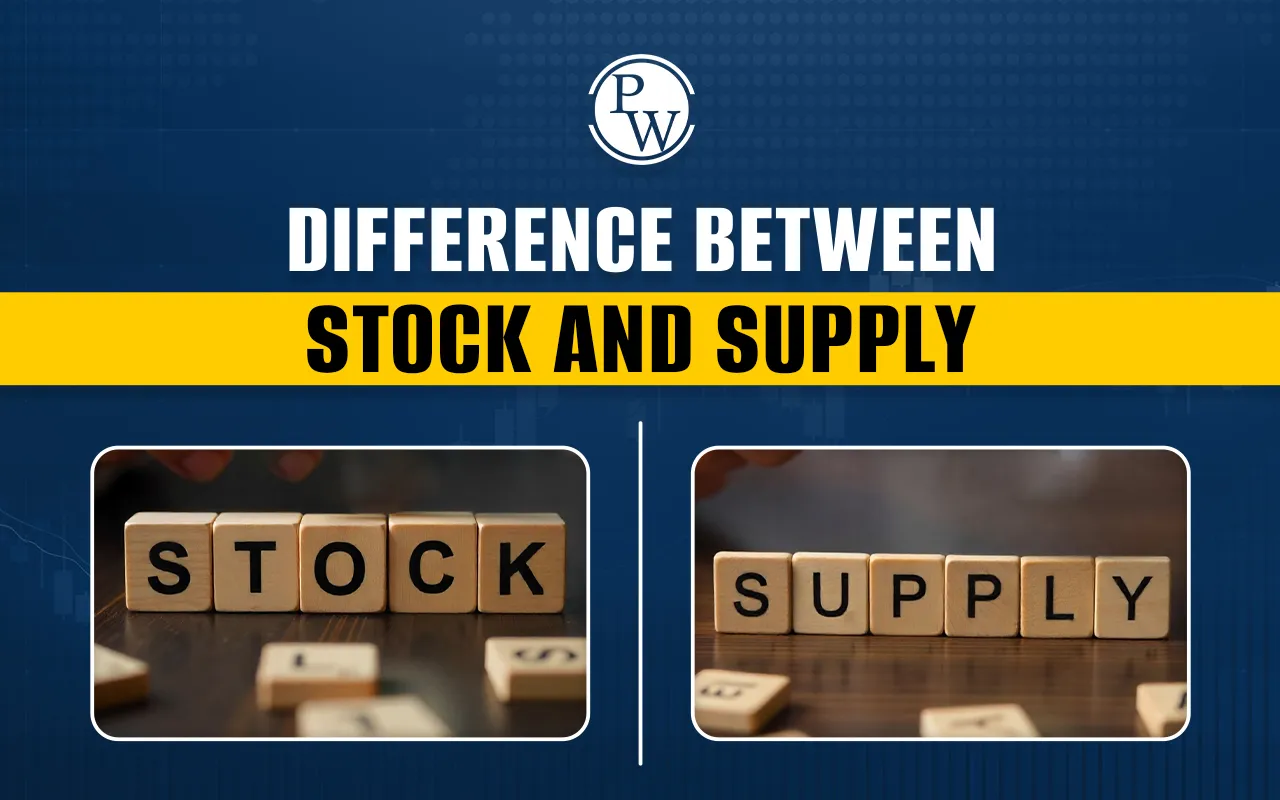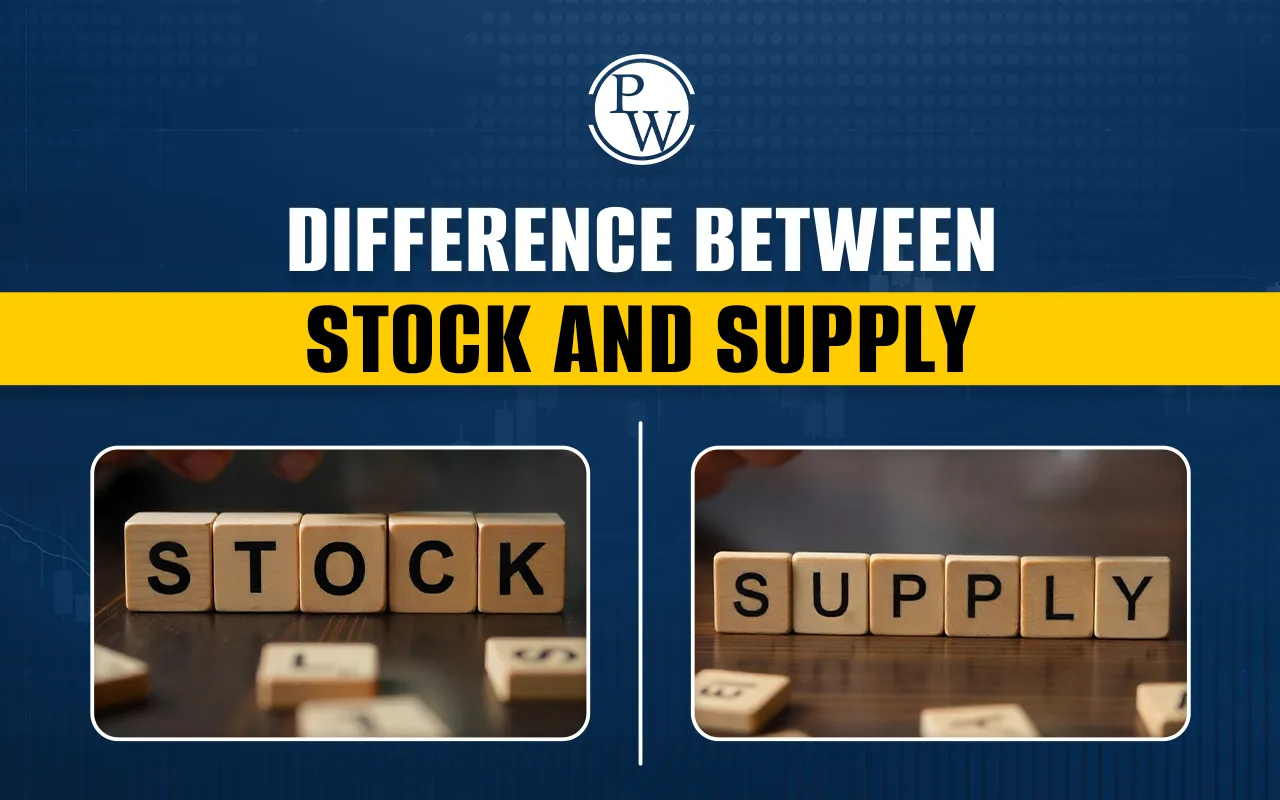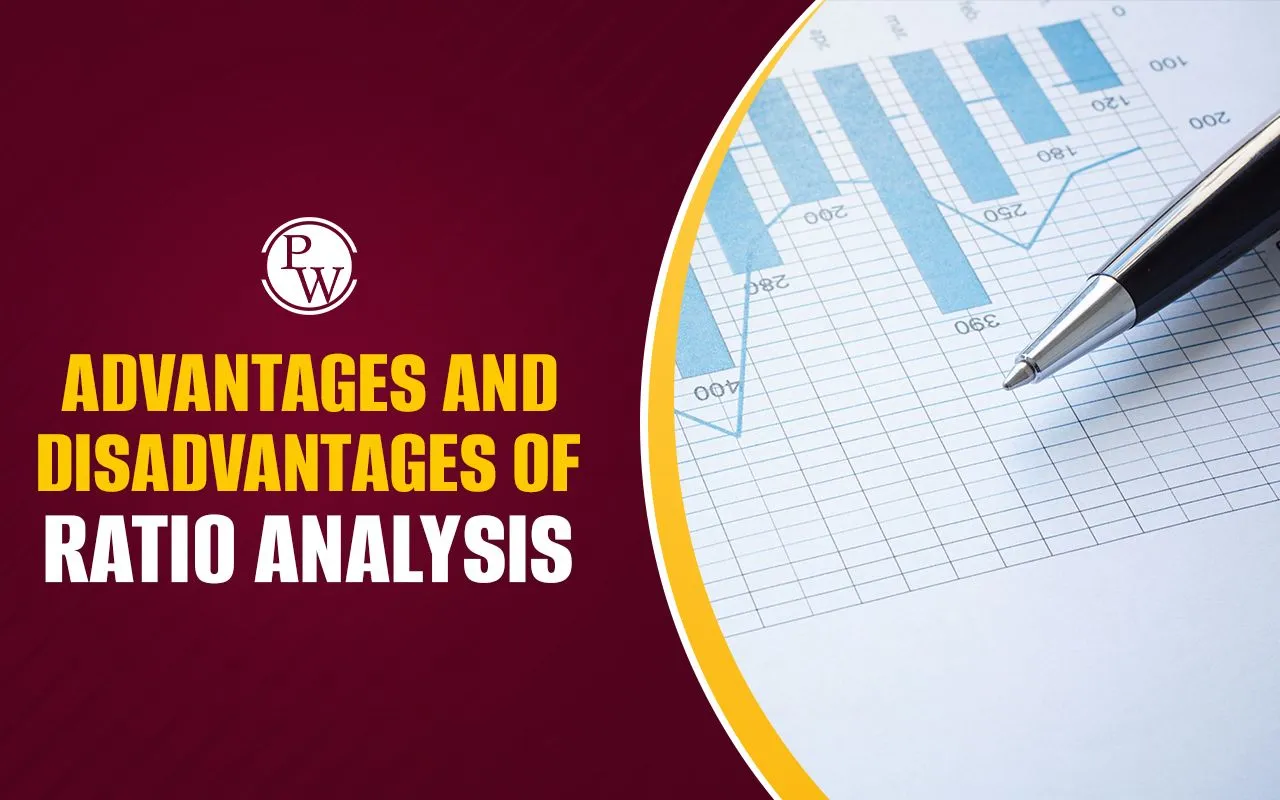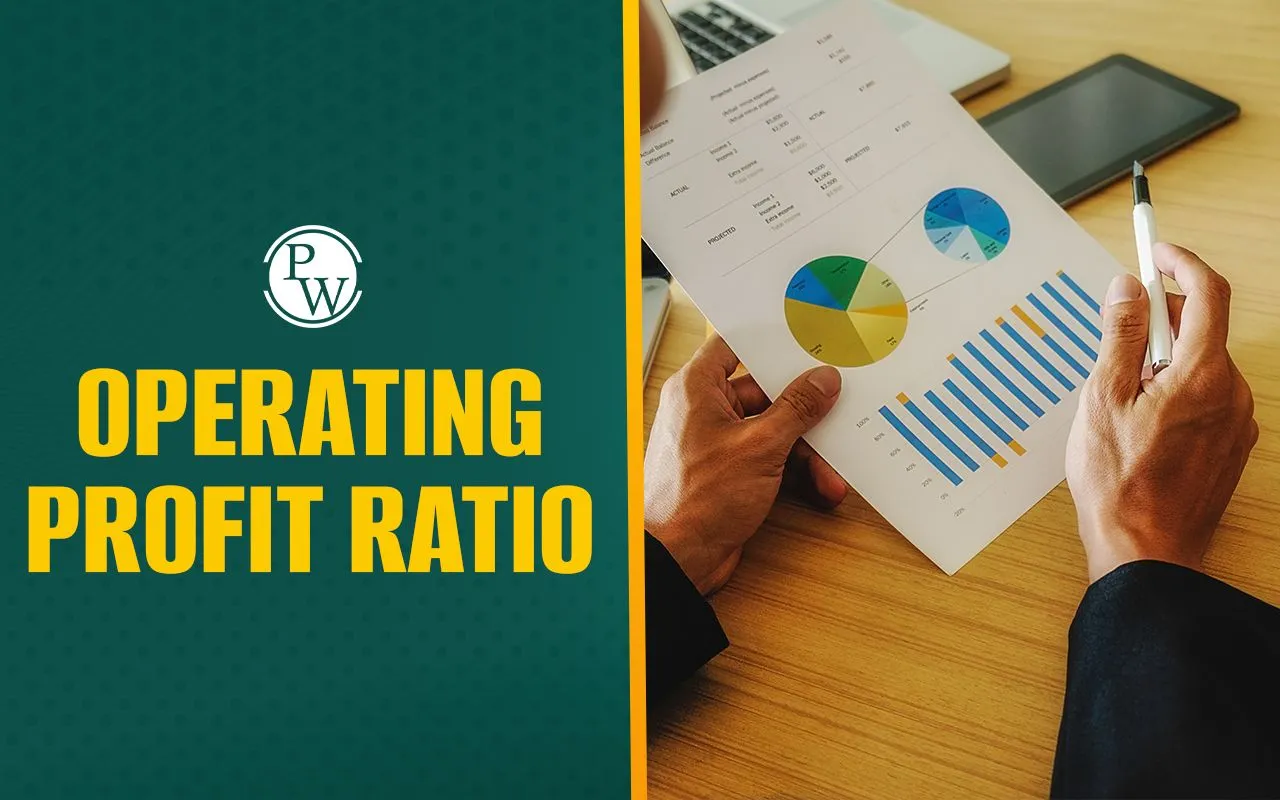

Difference Between Stock and Supply: In economics and business studies, the concepts of stock and supply are very important. Many students and learners often get confused between the two because they sound similar. However, they are not the same. Stock refers to the total quantity of goods that are available, while supply refers to the actual amount of goods that sellers are ready to sell at a given price.
Understanding the difference between stock and supply helps us know how businesses plan their production, sales, and storage. Below, we’ve explained stock, supply, and the difference between stock and supply in the simplest way possible.
What is Stock?
Stock refers to the total quantity of goods that a producer has at a particular time. It is not only the goods that are available for sale in the market, but also the goods kept in warehouses for future use. For example, a farmer may grow 500 bags of wheat. Out of these, 300 bags are sold immediately in the market, while the remaining 200 bags are stored. The total of 500 bags is called the stock.
Stock can be used to meet sudden demands in the future. If the market price goes up, the producer may release the stored stock to gain more benefits. Stock depends mostly on the level of production. The more a company produces, the higher its stock will be. However, all stock is immediately offered for sale. A part of it always remains stored.
What is Supply?
Supply is different from stock. It means the amount of goods that sellers are ready and willing to sell at a certain price during a specific period of time. It is not the total stock but only that portion which is offered in the market. Supply shows a clear relation between the quantity of goods and their price. When prices increase, producers may supply more goods to earn higher revenue. When prices fall, they may reduce the supply.
Supply depends on factors like price, cost of production, government rules, and even seasonal changes. Unlike stock, supply always refers to a specific time frame, like daily, weekly, monthly, or yearly supply.
Difference Between Stock and Supply
Now that we know the meaning of stock and supply, let us focus on the difference between stock and supply. Stock refers to the total goods available, while supply refers to the goods actually brought to the market for sale.
This makes the supply a smaller part of the total stock. A company must make sure that most of its stock is turned into supply to generate revenue. If stock remains unsold for too long, it may lose its value. Below, we’ve mentioned the difference between stock and supply:
| Difference Between Stock and Supply | ||
| Basis | Stock | Supply |
| Definition | Total quantity of goods available at a particular point in time. | The quantity of goods that sellers are willing and able to sell at a given price during a specific period. |
| Time Dimension | Stock is measured at a particular point of time. | Supply is measured over a period of time, like per day, month, or year. |
| Measurement | It shows how much quantity is available at a given time. | It shows how much quantity is sold or offered during a given period. |
| Interdependence | Stock does not depend on supply. | Supply depends on stock. It can never be more than stock. |
| Dependent Factors | Depends mainly on production. | Depends mainly on price. |
| Nature | Static in nature because it is measured at a point of time. | Dynamic in nature because it changes with time and price. |
| Purpose | Helps in meeting sudden increases in demand. | Helps in selling goods and generating revenue. |
| Scope | Wider, as it includes both goods for sale and stored goods. | Narrower, as it includes only goods for sale. |
| Factors Affecting Fluctuation | Affected by production levels. | Affected by changes in stock and price levels. |
Both stock and supply are vital for the smooth working of a business. Stock refers to the total goods available, while supply refers to the goods that are actually sold or offered for sale. The difference between stock and supply is mainly in their definition, measurement, time reference, and purpose. Stock is static and wide in scope, while supply is dynamic and narrow in scope.
By maintaining a balance between stock and supply, companies can ensure that they meet customer demands and generate regular revenue. For learners, knowing the difference between stock and supply builds a strong foundation in economics and business studies.
In simple words, stock is like the total food in their kitchen, while supply is what they actually serve on the dining table. Both are connected, but they are not the same. And that is the clear difference between stock and supply.
Difference Between Stock and Supply FAQs
What is the main difference between stock and supply?
Can supply ever be more than stock?
Why is stock considered static while supply is dynamic?
What factors affect stock and supply?













